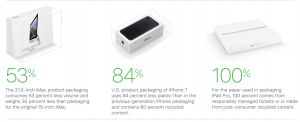Foresight is about aligning decisions in the present with the future that is emerging, something Apple has been doing, to some extent, over the decades. At a time when technology began to dominate the global market, Apple must have understood the trends that were driving change, including mobile internet and web browsing, digital connectivity, LCD displays, palmtop computers, etc. The company’s decisions supporting iPhone, iPod and iPad innovations, to name a few, helped influence the future Apple desired, a future we’re living in today. But while these present-day technologies had been Apple’s core business, positioning Apple as the dominant global brand from 2011 to 2013, and again in 2015, it isn’t content being known as simply a hardware company, as “hardware, software and services” are combined to produce a cohesively whole business. What’s more, Apple appears to have some understanding, once again, of the emerging future—a future 10 to 30 years out, influenced by a present-day movement towards global sustainability.

Consider Apple’s joint-venture with Xinjiang Goldwind Science & Technology, the world’s largest producer of wind turbines, with respect to Apple’s commitment of “powering all of its facilities around the world with 100 percent renewable energy”. As well, take note of Apple’s 2017 Environmental Responsibility Report, which highlights Apple’s achievements and continuing efforts toward using only responsibly-sourced product packaging. Then, there’s Apple’s commitment to “stop mining the earth altogether” in moving towards a “closed-loop supply chain” or circular economy, whereby all new products will be made with 100% recycled materials. These are just two examples which show that Tim Cook isn’t producing the same type of Apple that we’ve seen before, but an Apple that engages foresight so as to align its “whole-business” activities with the emerging future. This, in a nutshell, is Apple’s story.
 What does Apple’s move towards global sustainability mean relative to forest futures? For starters, in 2015 Apple announced a 5-year partnership with World Wildlife Fund (WWF) “to transition Chinese forests into responsible forest management by 2020”, including establishing long-term market incentives for producing responsibly sourced paper. Also in 2015, Apple purchased forestland in Maine and North Carolina through the Conservation Fund’s Working Forest Fund, allowing its use of renewable/regenerative resources for product packaging needs. Apple’s move towards sustainability in alignment with the emerging future is protecting “some of the world’s most important forests“—a step towards climate-change mitigation, and something for which future generations will appreciate. Kimberly Daniels
What does Apple’s move towards global sustainability mean relative to forest futures? For starters, in 2015 Apple announced a 5-year partnership with World Wildlife Fund (WWF) “to transition Chinese forests into responsible forest management by 2020”, including establishing long-term market incentives for producing responsibly sourced paper. Also in 2015, Apple purchased forestland in Maine and North Carolina through the Conservation Fund’s Working Forest Fund, allowing its use of renewable/regenerative resources for product packaging needs. Apple’s move towards sustainability in alignment with the emerging future is protecting “some of the world’s most important forests“—a step towards climate-change mitigation, and something for which future generations will appreciate. Kimberly Daniels
Photos 1 & 1 source: https://images.apple.com/environment/pdf/Apple_Environmental_Responsibility_Report_2017.pdf



